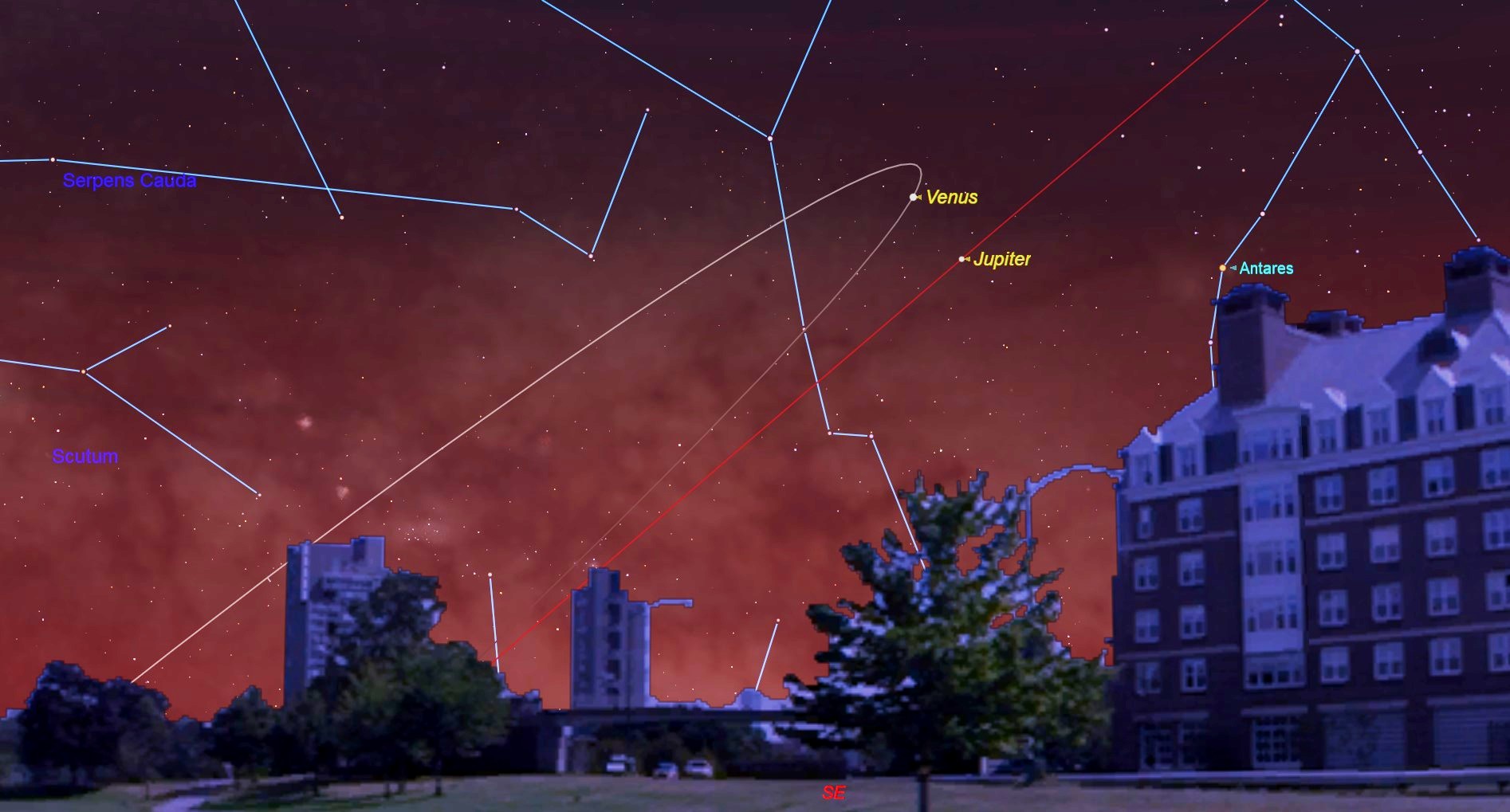How to See Venus and Jupiter Early Tuesday! Two Brightest Planets Meet Up at Dawn

Without a doubt, now that Sunday night's total lunar eclipse has passed into history, the most spectacular celestial sight coming this week is reserved for the early morning sky: Venus and Jupiter, the two brightest planets, will unite for a stunning dawn conjunction.
Kenneth L. Franklin (1923-2007), the former chairman and chief astronomer at New York's Hayden Planetarium and, I'm proud to say, one of my mentors in astronomy, would often refer to our "dynamic and ever-changing sky." Such an eloquent description certainly fits our current morning sky, for this week will be great time for pre-dawn skywatchers, with a beautiful pairing-off of Venus and Jupiter on Tuesday morning (Jan. 22). [Amazing Photos of the Super Blood Wolf Moon of 2019!]
Dazzling "double planet"
For the past few months, dazzling Venus has been prominent in our morning sky. And about a month ago, brilliant Jupiter also began to emerge from the glare of the sun. The two planets are currently rising from the east-southeast horizon more than 3 hours before sunrise.
All through this month, the gap between them has been noticeably closing. Jupiter has been slowly ascending and approaching Venus, and on Tuesday, they'll be separated by 2.4 degrees, which is equal to nearly five times the apparent width of the full moon. (The width of your fist, held at arm's length, roughly corresponds to 10 degrees.) Jupiter will shine brilliantly, at magnitude -1.8, yet it will appear only one-eleventh as bright as Venus, which will gleam at magnitude -4.4 (lower magnitudes are brighter).
Together, the two objects will make for a spectacular "double planet" in the dawn twilight. In recent days, I've received several inquiries from early risers who have sighted these two bright lights in the east-southeast sky and have wondered what they are.
In reality, not really so close
Of course, what we are seeing is strictly an illusion of perspective. In a relative sense, neither planet is close to the other in space. Venus is 73 million miles (118 million kilometers) from Earth. The lesser gem flanking Venus — Jupiter, largest of all our solar system's planets — is nearly four and a half times more distant from us than Venus is, at 558 million miles (897 million km) away from Earth.
Generally speaking, at least for the immediate future, conjunctions between Venus and Jupiter will come in pairs. The first conjunction such a pairing takes place in the morning sky, followed about 10 months later by another in the evening sky. Then, after about two and a half years, Venus and Jupiter will again appear in conjunction, again in the morning sky.
Breaking space news, the latest updates on rocket launches, skywatching events and more!
After Tuesday's conjunction, Venus and Jupiter will next get together in the evening sky late next fall, on Nov. 24. After that, we'll have to wait until April 20, 2022 (morning sky) and March 2, 2023 (evening sky) for the next set of Venus-Jupiter conjunctions.
Editor's note: If you snap an amazing photo of the Jan. 22 conjunction of Venus and Jupiter that you'd like to share with Space.com and our news partners for a possible story or image gallery, send comments and images in to: spacephotos@space.com.
Joe Rao serves as an instructor and guest lecturer at New York's Hayden Planetarium. He writes about astronomy for Natural History magazine, the Farmers' Almanac and other publications, and he is also an on-camera meteorologist for Verizon FiOS1 News in New York's lower Hudson Valley. Follow us on Twitter @Spacedotcom and on Facebook. Original article on Space.com.
Join our Space Forums to keep talking space on the latest missions, night sky and more! And if you have a news tip, correction or comment, let us know at: community@space.com.

Joe Rao is Space.com's skywatching columnist, as well as a veteran meteorologist and eclipse chaser who also serves as an instructor and guest lecturer at New York's Hayden Planetarium. He writes about astronomy for Natural History magazine, Sky & Telescope and other publications. Joe is an 8-time Emmy-nominated meteorologist who served the Putnam Valley region of New York for over 21 years. You can find him on Twitter and YouTube tracking lunar and solar eclipses, meteor showers and more. To find out Joe's latest project, visit him on Twitter.
